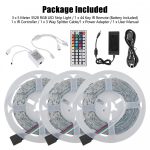Last Updated on 1 year by Francis
https://www.youtube.com/watch?v=S5zmQCrcS80
Red light therapy is an innovative treatment that utilizes red LED lights to help heal a variety of conditions, including skin problems and chronic pain. This therapy is becoming increasingly popular due to the many benefits it provides, such as promoting wound healing, reducing inflammation, and improving circulation. In this article, we will explore the advantages of using red light therapy and how it can improve your overall health and wellbeing.
Contents
Understanding Red Light Therapy
Red Light Therapy is a non-invasive treatment that uses a specific wavelength of light to penetrate the skin and promote healing. This form of therapy is also known as photobiomodulation, low-level light therapy, or biostimulation. It has been used for centuries to treat various medical conditions and is gaining popularity as a natural, safe, and effective alternative to traditional treatments.
How Does Red Light Therapy Work?
Red Light Therapy works by stimulating the mitochondria in our cells, which helps to increase ATP production, the energy currency of our cells. This increased energy production helps to promote healing and reduce inflammation in the body. Red Light Therapy also helps to increase blood flow to the treated area, which helps to deliver more oxygen and nutrients to the cells.
What Are the Benefits of Red Light Therapy?
The benefits of Red Light Therapy are numerous and varied. It has been shown to improve skin health, reduce pain and inflammation, improve mood, and even promote hair growth. Red Light Therapy has also been used to treat a variety of medical conditions, including arthritis, chronic pain, and even depression.
The Science Behind Red Light Therapy
Red Light Therapy has been extensively studied in the scientific community, and there is a growing body of evidence to support its use as a safe and effective treatment for a variety of medical conditions. One of the primary mechanisms of action of Red Light Therapy is the activation of the body’s natural healing processes.
How Does Red Light Therapy Promote Healing?
Red Light Therapy promotes healing by increasing the production of ATP, which is necessary for cellular metabolism and repair. It also helps to stimulate the production of collagen, which is necessary for skin health and wound healing. Red Light Therapy also helps to increase blood flow to the treated area, which helps to deliver more oxygen and nutrients to the cells.
What Are the Potential Side Effects of Red Light Therapy?
Red Light Therapy is generally considered safe and has few side effects. However, some people may experience mild side effects, such as redness, itching, or swelling at the site of treatment. These side effects usually resolve within a few days and are not considered serious.
How to Use Red Light Therapy
Red Light Therapy can be administered in several ways, including through the use of specialized light therapy devices, such as lamps, panels, or handheld devices. It can also be administered through the use of Red Light Therapy beds or booths. The duration and frequency of treatment will depend on the specific condition being treated and the individual’s response to therapy.
How to Choose a Red Light Therapy Device
When choosing a Red Light Therapy device, it is important to consider factors such as the wavelength of light, the intensity of the light, and the size of the device. It is also important to choose a device that is FDA-approved and has been tested for safety and effectiveness.
How to Use Red Light Therapy at Home
Red Light Therapy can be used at home through the use of handheld devices or light therapy panels. It is important to follow the manufacturer’s instructions carefully and to use protective eyewear when using the device. It is also important to start with short treatment times and gradually increase the duration of treatment as tolerated.
FAQs – Why Use Red Light Therapy
What is red light therapy?
Red light therapy, also known as low-level light therapy, is a type of treatment that uses red and near-infrared light wavelengths to penetrate the skin and promote healing of damaged tissues. It has been shown to be effective in treating a range of conditions such as pain relief, skin rejuvenation, and improved circulation.
Red light therapy works by penetrating the skin and stimulating the production of ATP, the energy currency of cells. This increased production of ATP leads to improved cellular function, resulting in benefits such as reduced inflammation, improved circulation, and enhanced wound healing.
What are some benefits of red light therapy?
There are a number of potential benefits associated with red light therapy, including pain relief, improved skin tone, reduced inflammation, and enhanced muscle recovery. It has also been shown to be effective in treating conditions such as acne, eczema, and psoriasis.
Is red light therapy safe?
Yes, red light therapy is generally considered to be safe. It is non-invasive, painless, and does not generate heat that can damage the skin. However, it is important to follow the manufacturer’s instructions carefully and avoid using the therapy if you have a history of seizures or epilepsy.
How long before I see results from red light therapy?
The length of time it takes to see results from red light therapy can vary depending on the specific condition being treated. Some people notice improvements after just one or two sessions, while others may need several weeks of treatment before they start to see a significant improvement in their symptoms. It is important to be patient and consistent with the therapy to achieve the best possible results.

.jpg)


.jpg)



